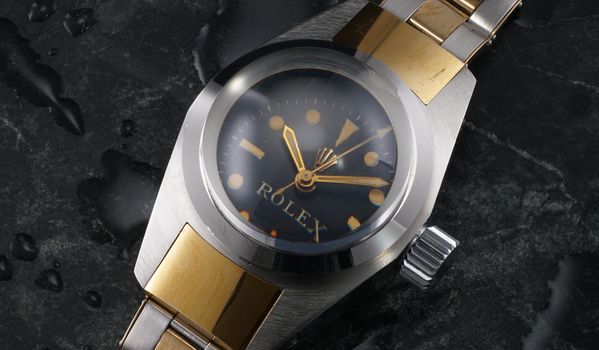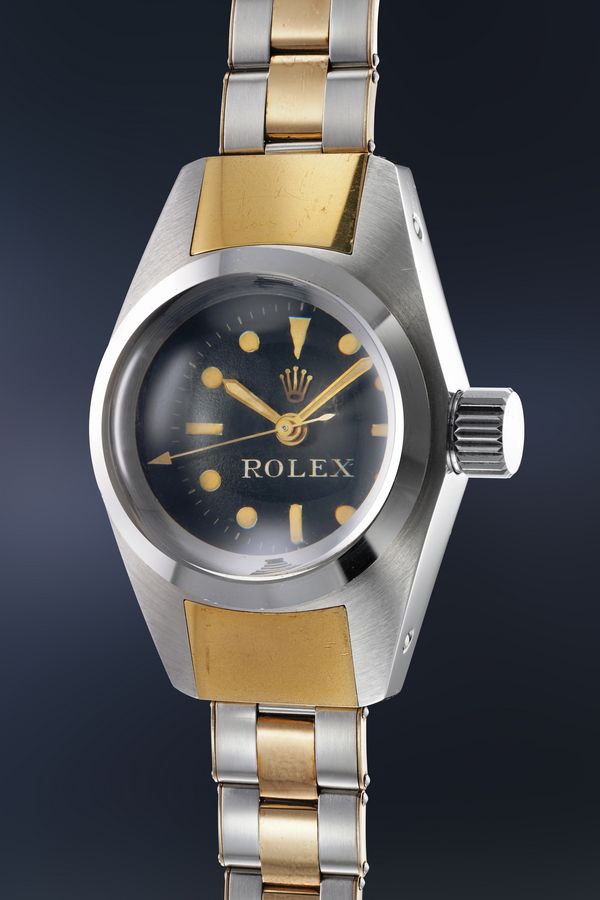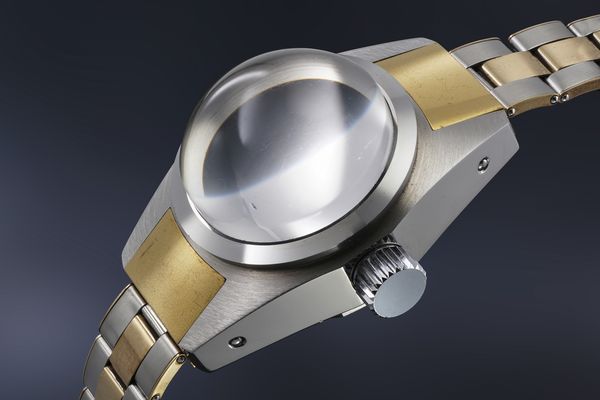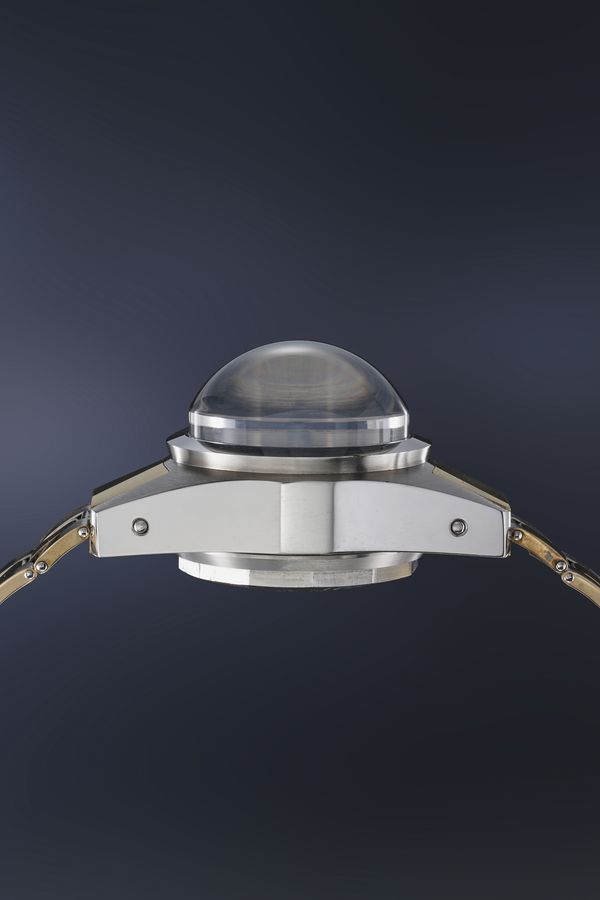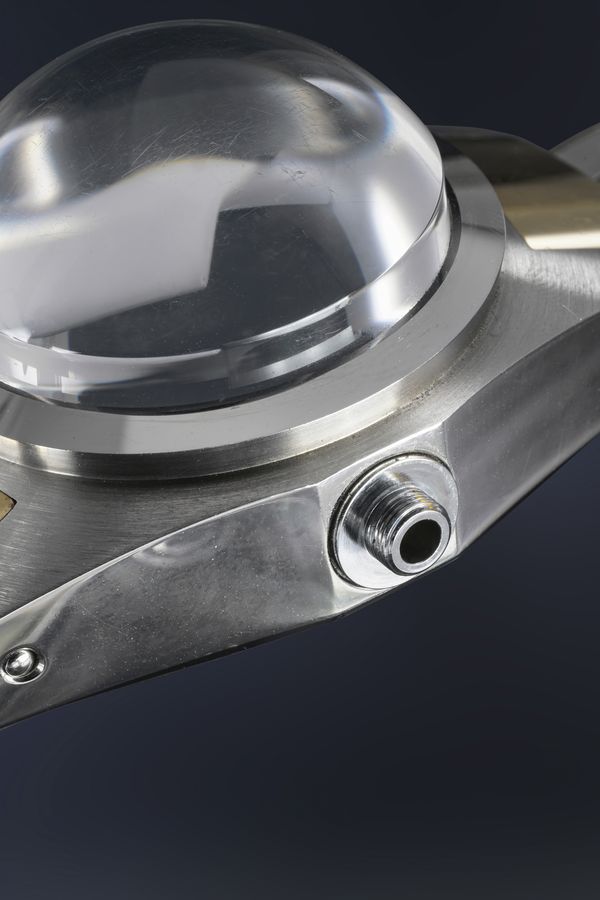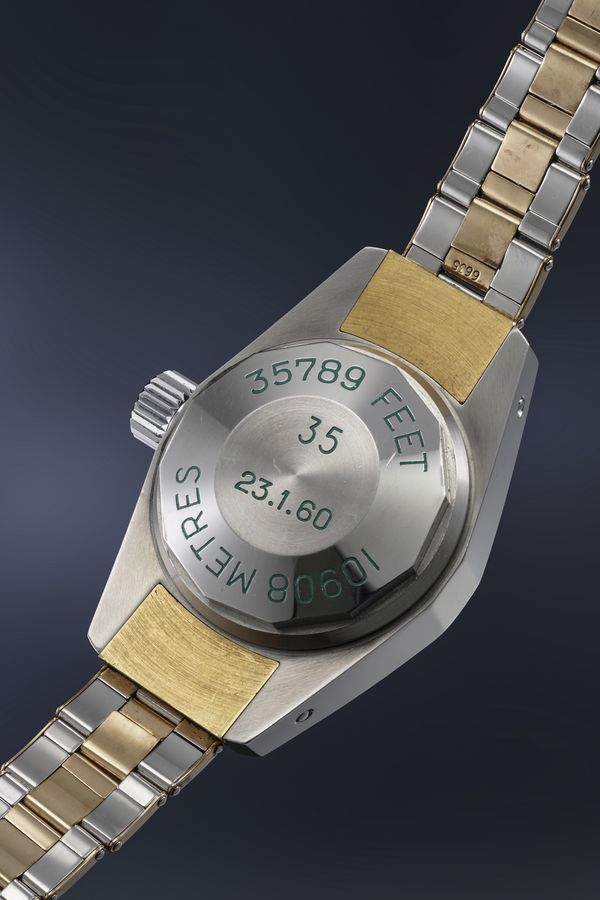By Tiffany To
Having equipped explorers on alpine missions, military armed forces in their professional line of work, Rolex sought out to conquer the deep seas in the 1950s. The result is the “Deep Sea Special”, a historically important, extraordinary and museum quality stainless steel and gold ultra-deep dive wristwatch with center seconds, made in 1965 and to be offered in the Geneva Watch Auction XIV (estimate 1,200,000 – 2,400,000 CHF).
Rolex has always been at the forefront of creating submersible timepieces, first creating the Rolex Oyster in the 1920s. It is a household innovation, known far and beyond the inner circles of watch afficionados. So famous is the Oyster case that collectors immediately associate the manufacture with this technology.
It is thanks to three seminal events that Rolex is today at the forefront of deep dive exploration. As mentioned earlier, the very first is the concept of the Oyster case, which was created in the early 1920s. Rolex's invention of the Oyster case was groundbreaking – watches could now be water resistant and could be worn during a number of physical and professional activities. In 1927, Rolex English swimmer Mercedes Gleitze wore a Rolex Oyster when she crossed the English Channel, establishing the Oyster name.
The second, which brings us to the present watch, was the creation of the “Deep Sea Special” in 1953 and subsequently 1960, such as the present watch. The creation of the Deep Sea Special showed that the deepest point on earth could be reached by a Rolex Oyster.
Finally, the James Cameron Deep Sea Challenge, in which he wore a Rolex Deepsea while embarking on a record-breaking solo dive to the Mariana Trench.
Thus, the Deep Sea Special represents a key moment in Rolex history. In the 1950s, in response to the increasing demand for water proof watches – whether it be for recreational professional of military use, Rolex decided to further the concept of an Oyster case. Not just content with making watches water proof, Rolex sought to further develop their line of underwater professional watches to withstand incredibly high pressure from the depths of the ocean - further than any of its previous models. Most notably, this decision to innovate coincided with the launch of the Submariner in 1953 – the underwater tool watch for divers. Rolex contacted Professor Piccard, renowned Swiss oceanographer and engineer, to test watches during his diving experiments. Piccard accepted and Rolex engineers developed a watch fitted with a special case and a domed crystal in order to hold up to extreme pressure.
In 1953, Rolex tested the first prototype by strapping it on the exterior of the Bathyscaphe Trieste Submersible, right outside the observation chamber. The watch was first tested at 1080 meters, then submerged to 3150 meters that same year. Having completed initial tests, Rolex embarked on a second mission in 1960 with a second prototype, pre-testing the new model with a high pressure chamber, tweaking and constantly updating details to improve the watch. This time, the new Deep Sea Special was created to withstand the most extreme conditions, having submerged more than 10,000 meters below sea level, completing its test in the Mariana Trench, the deepest known point on Earth, with Jacques Piccard and Don Walsh. Most interestingly, the size of the plexi became much higher between 1950 and 1960, showing the tweaks that Rolex undertook to improve the impermeability of the timepiece.
It is our understanding that the first batch of a handful of pieces were used for professional testing with some being entrusted to Piccard – in fact, recent research and correspondence with the Musée du Léman in Switzerland has shed light on this matter. They confirm (translated from French) that “the watch in our possession was given to us by Jacques Piccard as a donation. During the dive in the Mariana Trench, two watches were given to Jacques Piccard. According to Jacques' testimony, the first, the N ° 3 was fixed near the window and was securely attached so as not to be torn off during towing. He wore the second on his wrist. The watch in our possession, copy No. 9 of the Rolex Deep Sea, belonged to Jacques Piccard, but is not the watch that was attached to the outside of the cabin during the dive. The latter is at the Smithsonian Institute in Washington and was given to them by Rolex in 1960.” Such testimony from an institution sheds important confirmation to the collecting community’s theories.
Of the ones known, the vast majority rest in the world's most distinguished museums dedicated to science, exploration, engineering, or seafaring. In preparation of this catalog entry, we have tried to locate as many Deep Sea Specials as possible that reside in public institutions, and are pleased to provide the following listing that we believe is the most complete of its kind so far published, including their individual watch numbers. We believe that Rolex still has a few examples which they occasionally use on tour during thematic exhibitions, new launches or international watches fairs, also listed below.
Prototypes
No. 03, The Smithsonian Museum, Washington DC, USA - believed to be the very watch strapped outside the Bathyscaphe Trieste Submersible
Commemorative Models
No. 01, Musée International d'horlogerie, La Chaux-de-Fonds Switzerland
No. 03, Deutsches Museum, Munich Germany
No. 09, The Musée du Léman, Nyon Switzerland
No. 22, Rolex Geneva Switzerland, toured in the United States with Lt. Don Walsh
No. 30, Swiss Museum of Transport, Lucerne Switzerland
No. 35, formerly in the Wuppertaler Uhren Museum, currently offered at Phillips 2021
No. 36, Beyer Clock & Watch Museum, Zürich, Switzerland
No. 47, Rolex Geneva Switzerland, toured in Singapore
Most interestingly, research shows that after the prototypes were created, the commemorative pieces were produced and Rolex numbered the cases starting with 1. This information is confirmed for the first time following correspondence with different museums. Purely on a technical level, what is extraordinarily interesting is that the Deep Sea Special was developed in the early 1950s, and the final watches were completed as late as the second half of the 1960s. According to literature, caliber 1570 was launched in 1965. Over the past decade, the dials followed the evolution of Rolex, starting from Swiss, to displaying an "Underline" in the early 1960s, and eventually to "T Swiss T". On a mechanical level, the prototypes are believed to all have been fitted with the caliber 1000, early examples from the commemorative batch were fitted with the caliber 1530 and later examples (most likely starting from 32), were fitted with caliber 1570, such as the present watch.
As such, having appeared in the public auction sphere twice, the present watch is numbered 35 and was originally sold at Auktionen Dr. Crott in 2001. We have confirmation from Auktionen Dr. Crott that the watch was deaccessioned by the Wuppertaler Uhren Museum, whose founder, Mr. Abeler had received the watch from Rolex in the 1970s. Indeed, it was originally listed at auction as being "one of the very few examples of this type known to be in private hands. She [the watch] was given by Rolex to the present owner at the beginning of the seventies." The dial most notably displays "T SWISS T", meaning that Rolex had produced the dial not earlier than 1964 - making sense, as this fits the date stamp on the bracelet which confirms the completion date of the watch in 1966. As such, the manufacture was completing the Deep Sea Special timepieces several years after 1960.
So rare is this timepiece that it joins the extremely exclusive club of which 5 of its kind have been sold in the public sphere, with other publicly known examples owned and displayed by storied institutions. As such, it has been 12 years since the last example has appeared at public auction, underscoring its absolute rarity. Considering that the majority of examples are in institutions, the present watch is without a doubt a trophy piece, of which very few remain in private hands.
We would like to thank Philipp Stahl, Musée International d'horlogerie, Deutsches Museum, The Musée du Léman and Swiss Museum of Transport for providing valuable information in the research and creating of the present essay.
Photo Credit: © Jess Hoffman
